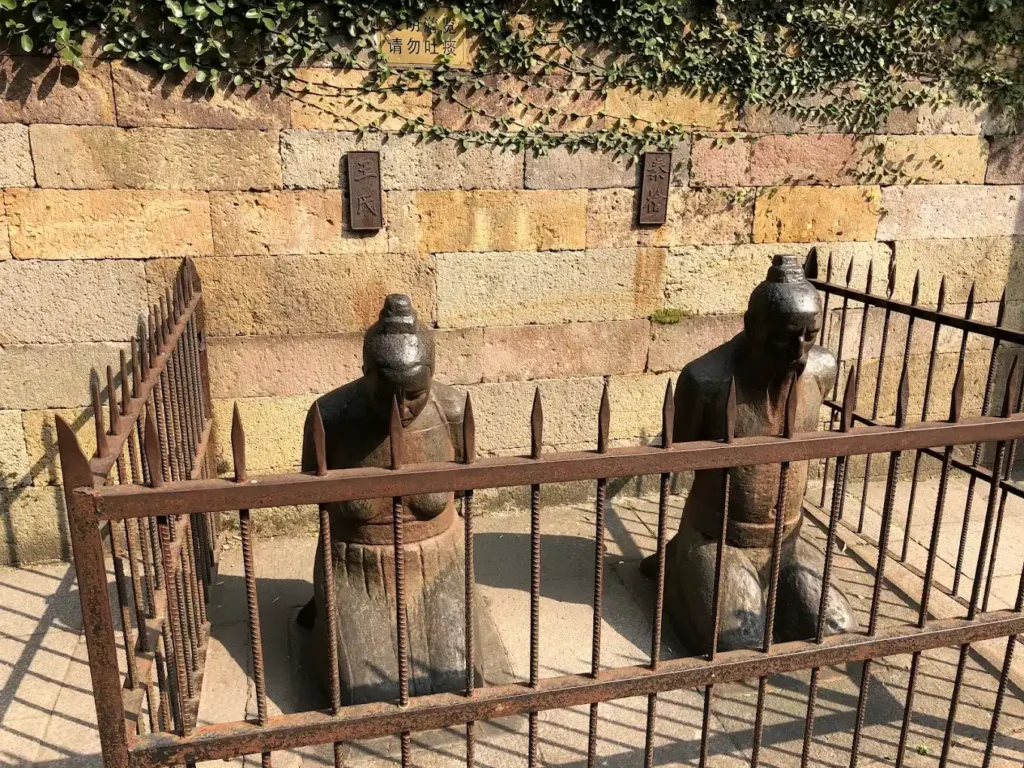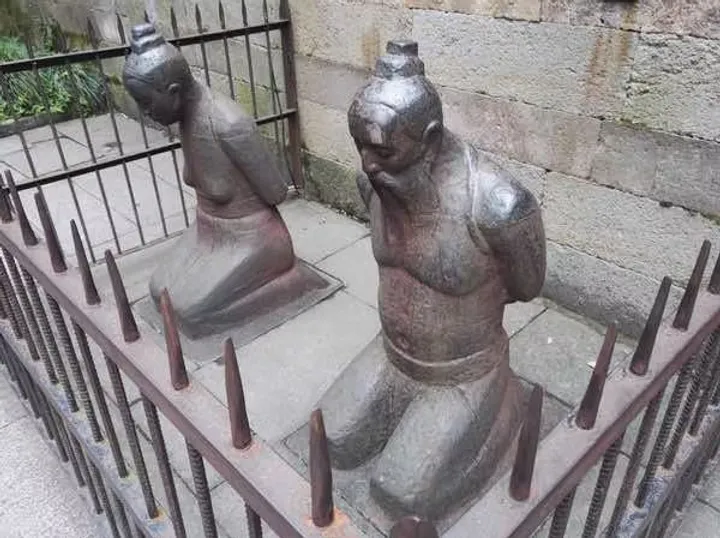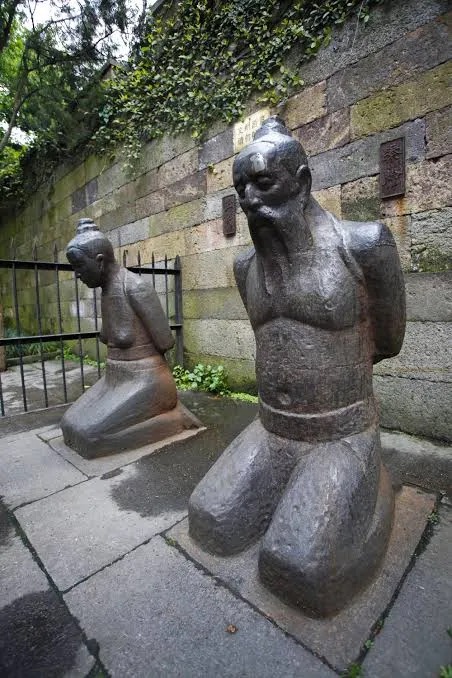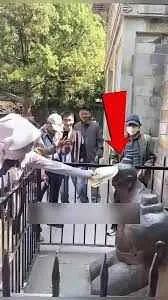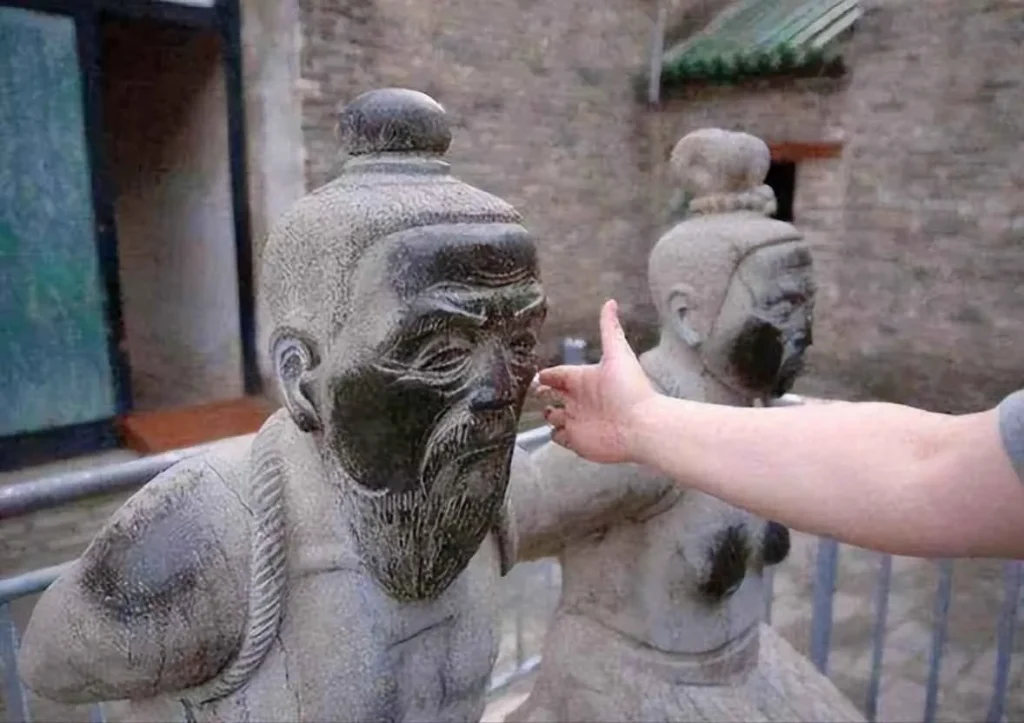In the heart of Hangzhou, in front of the imposing mausoleum of General Yue Fei, stand two kneeling iron figures. One represents Qin Hui, the former chancellor of the Song Dynasty. The other, his wife. Both are shown with their heads bowed and hands bound, eternally humiliated before the Chinese national hero. But these statues aren’t just for viewing—they’re there to be spat on, kicked, and publicly shamed.
Who was Qin Hui, and why is he so hated?
Qin Hui lived in the 12th century and has been vilified for centuries as the most infamous traitor in Chinese history. He is accused of conspiring to imprison and unjustly execute General Yue Fei, the ultimate symbol of patriotic loyalty. While Yue Fei bravely defended the Song Dynasty against the invading Jurchens, Qin Hui, as chancellor, pushed for peace. When Yue Fei disobeyed imperial orders and continued the fight, Qin Hui charged him with treason on dubious grounds. Yue Fei was imprisoned and later executed. Years after his death, the government rehabilitated Yue Fei as a martyr, and Qin Hui’s name was permanently tarnished.
Fried dough, disgrace, and a golden shower of hate
Qin Hui’s rejection isn’t confined to history books. It lives on in street food, folk customs… and daily gestures of disgust. One of China’s most popular fried snacks, yóutiáo—which means “oil-fried devil”—is symbolically linked to Qin Hui and his wife. The two connected strips of dough, fried together in hot oil, represent the traitorous couple being punished anew each morning at breakfast.
But the real emotional release happens in front of the statues. For generations, visitors to Yue Fei’s mausoleum have not missed the chance to spit on, urinate on, slap, or hit the kneeling figures of Qin Hui and his wife with their shoes. This spontaneous tradition of “historic justice” has physically worn down the statues so badly they’ve been replaced multiple times—the most recent being in 1979.
Eight centuries of uninterrupted contempt
These iron figures have been despised for over 800 years. The first versions were installed shortly after Yue Fei’s death in 1142. Since then, countless generations have expressed their loathing with spit, insults, and physical strikes. What’s remarkable isn’t just the intensity of the hatred—but its longevity. Few statues in the world have endured such constant, public humiliation for so many centuries.
Eternal punishment cast in iron
These sculptures weren’t placed for mere decoration, but as moral instruction. The scene is meant to teach future generations about loyalty, honor, and the consequences of betrayal. Qin Hui is reduced, quite literally, to a powerless figure, while Yue Fei is elevated to patriotic immortality.
Although the historical details are complex and often debated—many accounts were written centuries after the fact—Qin Hui’s case shows the lasting power of a narrative. In this story, the traitor is condemned not only by official records, but by the fury of the people, enacted again and again for hundreds of years.
Today, the statues of Qin Hui are far more than pieces of metal—they are vessels of a charged collective memory. Because in China, history isn’t just remembered… it’s spat on, slapped, and struck with the sole of a shoe.
